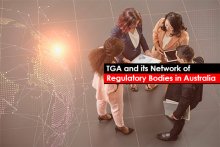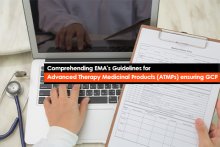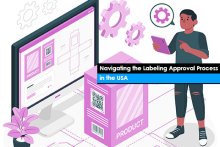In a recent study in Canada, it was observed, “1 in 9 emergency cases were related to drug adverse events, and as many as 68% of those were preventable”. Prevention is better than cure. Having learnt that, the first and foremost task for the companies is to look at the ways that prevent the adverse events? Apart from standardizing the drug invention and clinical processes, perhaps the obvious way would be to inform the end user about the drug and its actual usage process in a most perceivable manner. Emphasizing the same, Health Canada has released a guidance document for Palin Language Labeling which came in effect from June 13, 2015, for Prescription drugs, and is expected to come in effect from June 13, 2017, for non-prescription drugs.
Well, the motto behind the frequent labeling guidelines is to ensure labels should not only convey accurate drug information to the end user, but should also ensure drug safety by making the information easy to understand by the physician as well as patients.
The plain language labeling requirement is one of the few specific requirements as proposed by the Health Canada. As per the guidance, the information in plain language labeling requirement consists:
“A.01.017 Every label of a drug for human use in dosage form shall meet the following conditions:
- The information that is required by these Regulations to appear on the label shall be
- Prominently displayed on it,
- Readily discernible to the purchaser or consumer under the customary conditions of purchase and use, and
- Expressed in plain language; and
- The format of the label, including the manner in which its text and any graphics are displayed on it, shall not impede the comprehension of the information referred to in paragraph (a).”
The other specific categories include:
- Brand Name Assessment Requirement
- Contact Information Requirement
- Mock-up Requirement
- Facts Table Requirement
Among the other requirements, brand name assessment has its own significance for Look-alike sound-alike (LASA) labeling.
Look-alike sound-alike (LASA) Labeling: As the name suggests, these are the products with different compositions but appear to be similar while speaking or writing. Such resemblance in the names may result in errors and confusion during prescription, dispensing, self-selecting, or managing a drug. Consequently, it increases the health risks for the patients and adverse effects of the drug selected by mistake. In order to deal with this situation, LASA brand name evaluation is obligatory for Drug Identification Number (DIN) and submission applications wherein a fresh brand name is recommended or a modification to a prevailing brand name is being suggested.
Note: The guidance need not be applied retroactively hence; the new regulations are applicable to only submissions received after the effective date.
To help manufacturers and distributors align to the latest changes as per the new regulations, the new guideline also emphasizes on the following aspects:
- submitting the label and package label mock-ups for assessment
- educating how to mention adverse effects on labels
- reviewing the product names to avoid confusion
- setting a format to provide information that is easy to read
In Conclusion
With the deadlines set, it is time the companies to get started with the implementations as per the guidelines. Considering the regulatory complexities down the pathways, it is recommended that companies should consult an expert labeling service provider to be assured of positive results in terms of approvals. Be prepared for the compliance.





